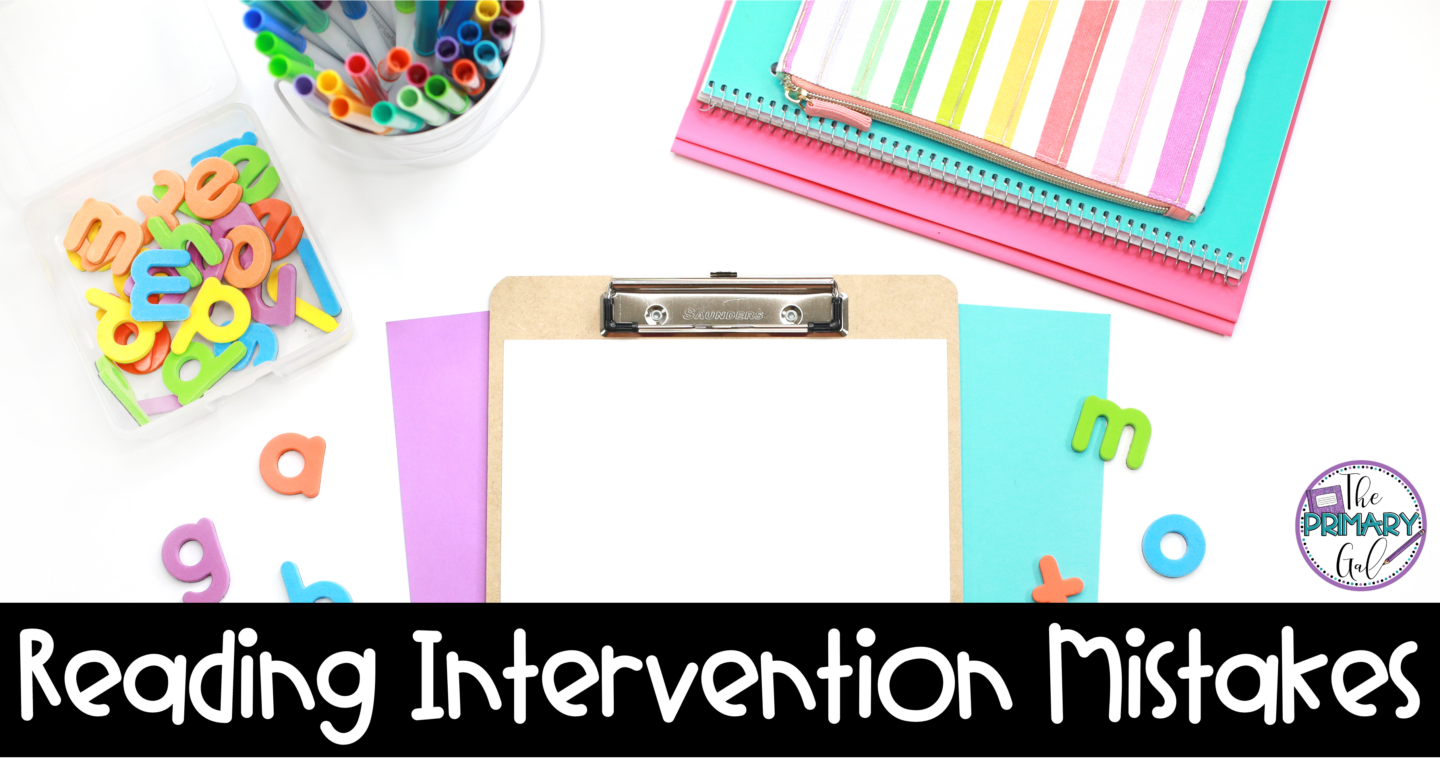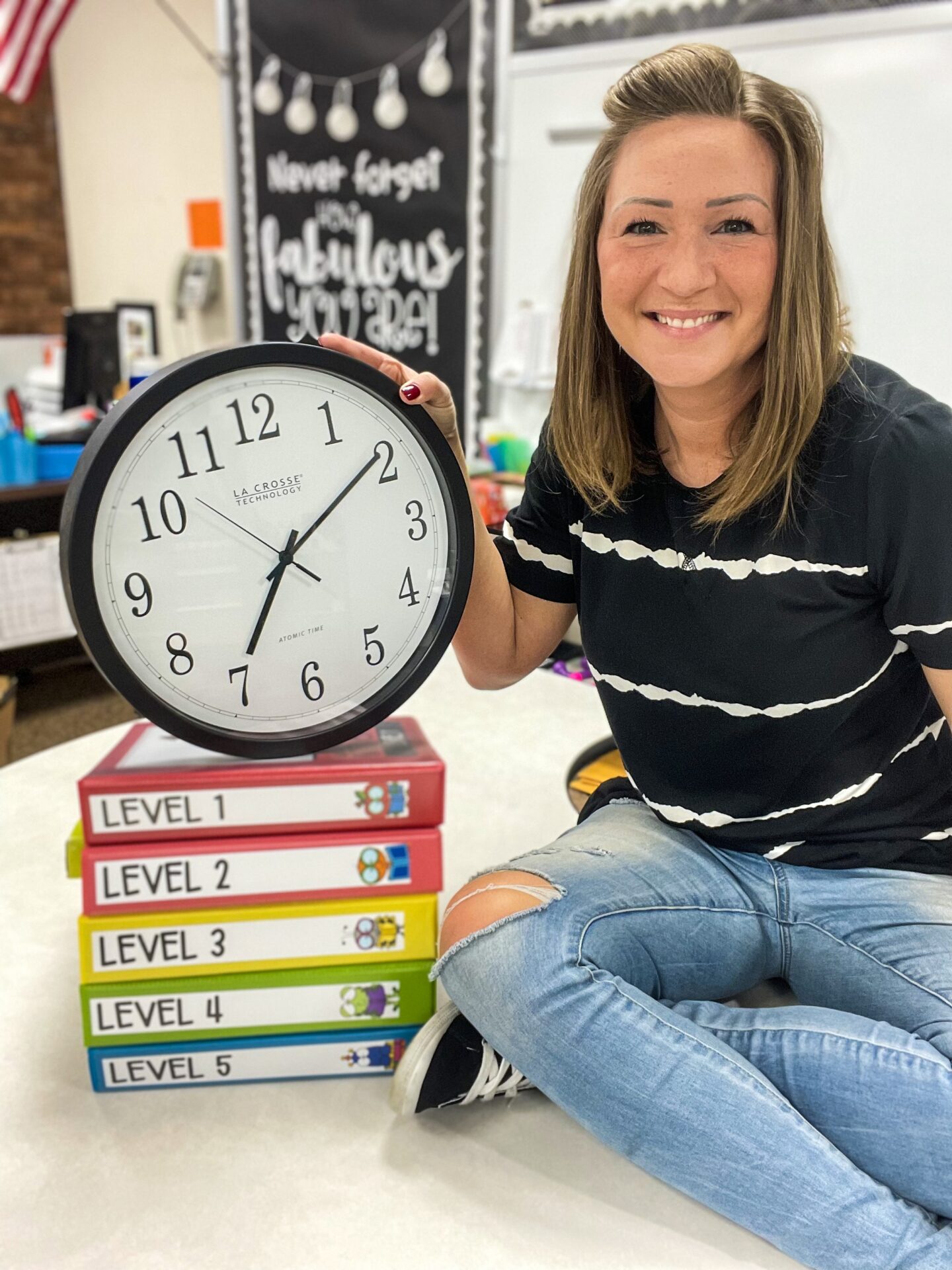
#1 The Intervention Isn’t the Right Fit
The Problem:
For so many of our resource rooms, we have too many kids and not enough time. If this sounds familiar, you are NOT alone. I hear from so many resource room teachers who are pulling a hot mess of kids together that should NEVER be working on the same tasks.
It could be happening for many reasons; a difficult homeroom teacher, requirements from your administration, trying to save time so you can have more time to push in. The list goes on and on.
And while I 100% understand ALL of these things, the interventions that you’re providing to your students need to be a valuable use of their time. It needs to be at their sweet spot of not too hard and not too easy. It needs to be JUUUUST right!
The Solution:
Use data to guide (and maybe convince others) your schedule. Begin by pulling their IEP goals, present levels, results from universal screeners, and your own assessments and observations to determine what skills your students are working toward mastering.
Organize it visually so that others can see what you’re trying to do.
It doesn’t make sense for two students who are working on CVC words to be pulled at the same time as two students working on vowel teams just because they are in the same homeroom.
Their intervention time is sacred. In that thirty minutes, they should be able to get exactly what they need from you without wasting time hearing instruction that is outside of their zone of proximal development.
#2 The Intervention Isn’t Followed Consistently
The Problem:
We all hear these big words when we’re talking about intervention.
Consistency.
Fidelity.
Systematic.
But what does that mean?
Well, it means that the time you spend with your students is precious. The work you do during that time is incredibly valuable. So, it’s important to ensure that you are using that time wisely.
Here’s what I see a lot. And to be honest, I’ve done it myself. 😬
You know your kids need to work on sight words, so you do it for a while.
Then, you realize that your kids are drowning when it comes to phonics.
So, you switch gears and begin working on phonics.
Meanwhile, you’re totally abandoning any progress that students were making on sight words.
Later, you realize that your kids are terrible at writing, so why not spend some time writing?
Fail.
They can’t even remember the sight words that you started the school year practicing.
And before you know it, you students have had a good introduction to everything and haven’t mastered one single thing.
When you progress monitor their IEP goals, you feel like a failure.
I’ve been there.
The Solution:
The key to overcoming this challenge is to have a routine that covers ALL the things.
You need something that helps you focus on the BIG picture instead of changing your mind every time the wind blows.
#3 You piece activities together from here, there, and everywhere.
The Problem:
Umm, first off, this was me for the first three years of my teaching career. 😂
When you have absolutely nothing, you are constantly in search mode. And while there are so many resources, both free and paid, out there, they aren’t all created with the same sequence in mind.
When you are putting a little of this and little of that together, you *might* luck into something that makes sense, but you also might have a week of things that are too hard or too easy. A week of something that you kids weren’t quite ready for. A week of something that was way too time consuming.
You’re lacking routine.
The Solution:
I encourage you to find an intervention that is complete and has a sequence that you can follow.
You need something that slow builds upon previously learned skills. You need an intervention that will allow you to move at a steady pace with a weekly routine that helps you cover everything.
I have that intervention for you! ❤️

And the good news, you can take a look at the first week and see what you think. I also have training videos to help you familiarize yourself with the routines that your students need in their resource room instruction.
You can save time, have a clear sequence of skills, and focus on the BIG picture.

Hi! I downloaded your free week materials and love them!! Is there any way for me to get more? Thank you!
Hi Lisa!
Yes, there are more weeks available. I’ll share the link to the big mama bundle. You can take a look at it or buy the level(s) that fit your needs.
https://www.teacherspayteachers.com/Product/Special-Education-Reading-Intervention-for-Tier-3-5662433